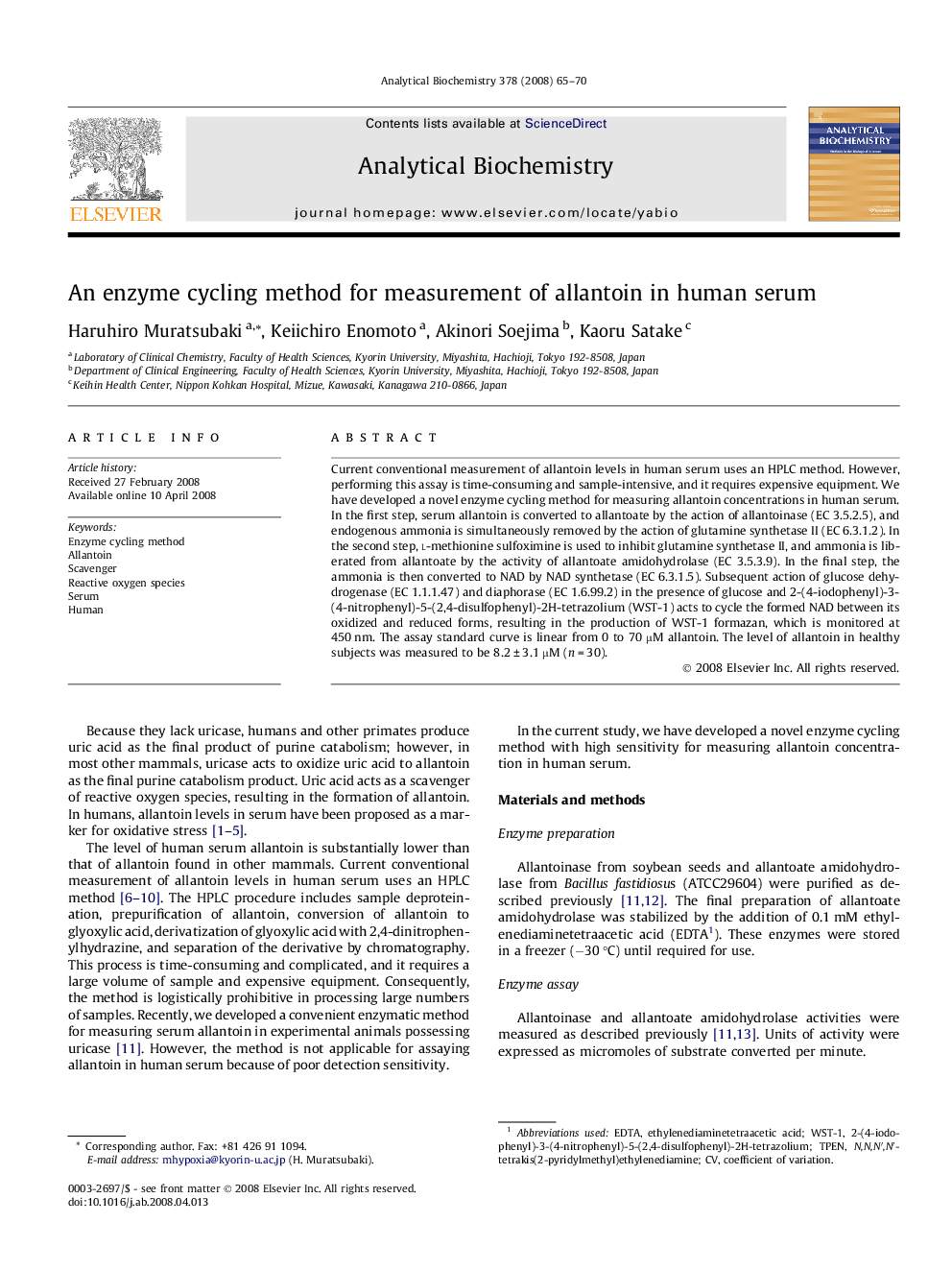| Article ID | Journal | Published Year | Pages | File Type |
|---|---|---|---|---|
| 1174751 | Analytical Biochemistry | 2008 | 6 Pages |
Current conventional measurement of allantoin levels in human serum uses an HPLC method. However, performing this assay is time-consuming and sample-intensive, and it requires expensive equipment. We have developed a novel enzyme cycling method for measuring allantoin concentrations in human serum. In the first step, serum allantoin is converted to allantoate by the action of allantoinase (EC 3.5.2.5), and endogenous ammonia is simultaneously removed by the action of glutamine synthetase II (EC 6.3.1.2). In the second step, l-methionine sulfoximine is used to inhibit glutamine synthetase II, and ammonia is liberated from allantoate by the activity of allantoate amidohydrolase (EC 3.5.3.9). In the final step, the ammonia is then converted to NAD by NAD synthetase (EC 6.3.1.5). Subsequent action of glucose dehydrogenase (EC 1.1.1.47) and diaphorase (EC 1.6.99.2) in the presence of glucose and 2-(4-iodophenyl)-3-(4-nitrophenyl)-5-(2,4-disulfophenyl)-2H-tetrazolium (WST-1) acts to cycle the formed NAD between its oxidized and reduced forms, resulting in the production of WST-1 formazan, which is monitored at 450 nm. The assay standard curve is linear from 0 to 70 μM allantoin. The level of allantoin in healthy subjects was measured to be 8.2 ± 3.1 μM (n = 30).
